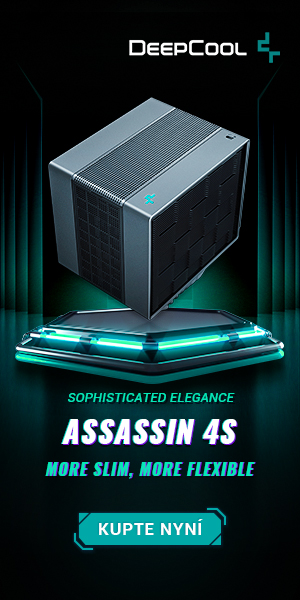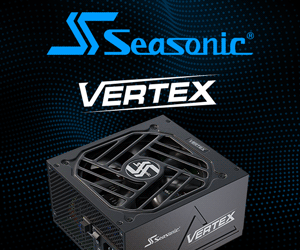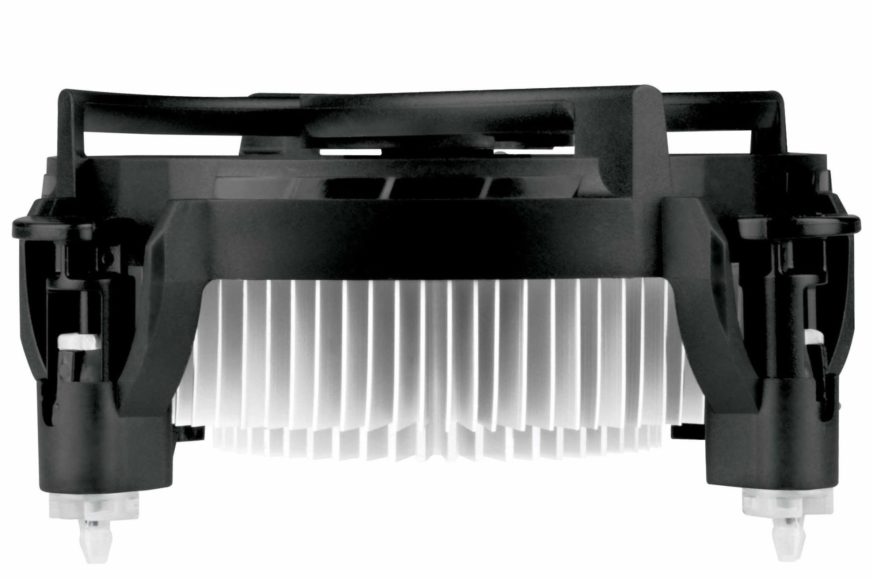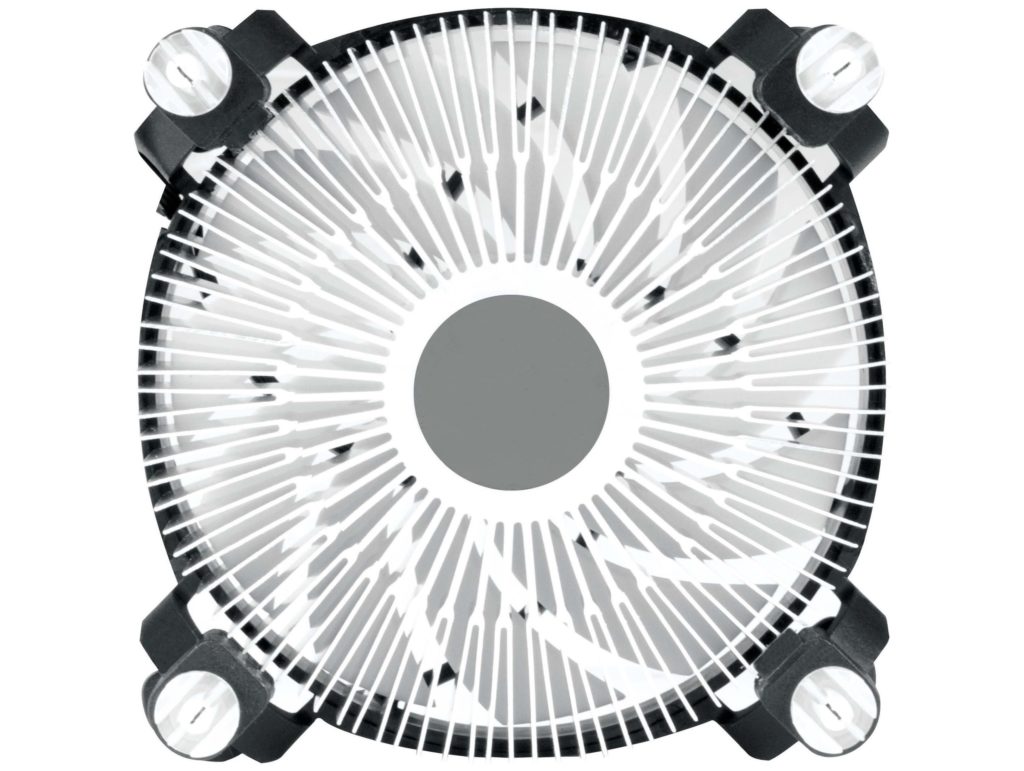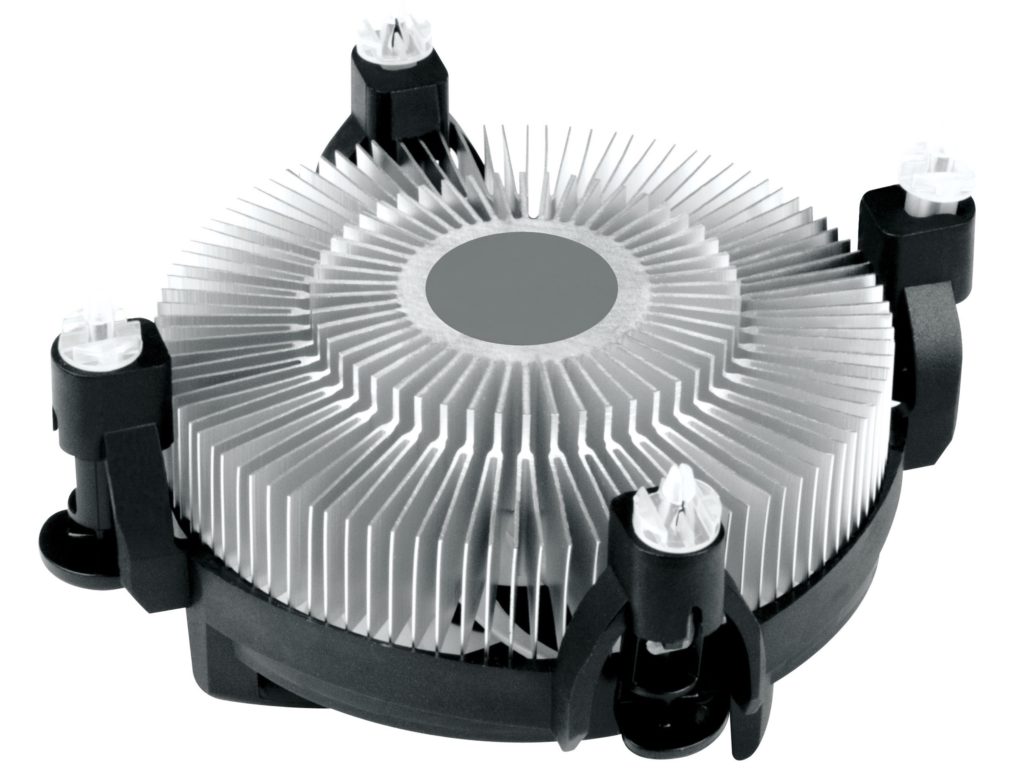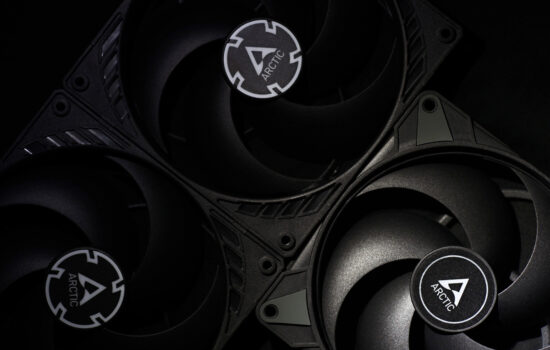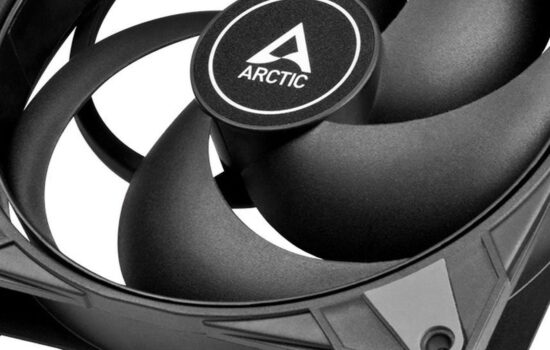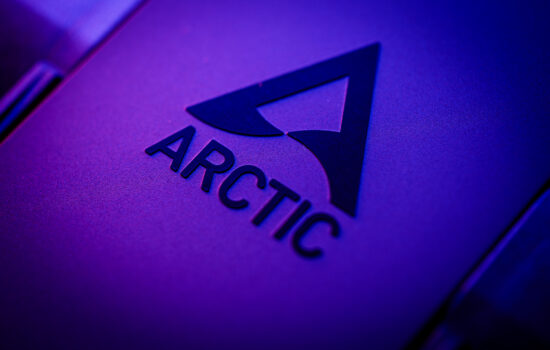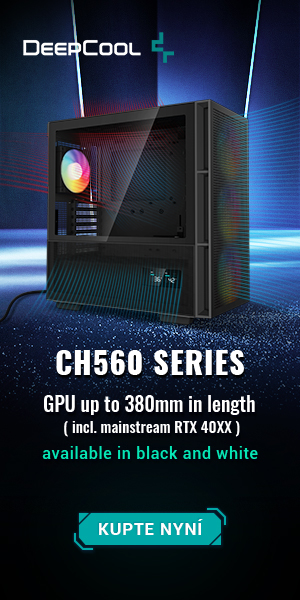Arctic Alpine 17 LP
Arctic now has a smaller version of the Alpine 17. The model of this top-flow cooler with the LP (low profile) end tag is one fan lower. This opens doors side panels to tighter cases where taller designs won’t fit, and Intel Laminar RM1 (from Core i3/5/7 packages) or RS1 (from Celerons and Pentiums) coolers tend to be too tall as well. However, it’s important to keep in mind that the Arctic Alpine 17 LP cooler is designed for very low-power processors.
The original Arctic Alpine 17 cooler does have higher cooling performance than the Laminar RM1 and RS coolers that come with Intel’s 65W processors, but at the cost of a taller design. The Alpine 17 outgrows the aforementioned Laminar coolers by 20.5 mm. This makes it unsuitable for smaller cases (it won’t fit). And for cases where the Laminar coolers won’t fit, Arctic now offers a low-profile variant of the Alpine 17 (LP).
The latter has a height of 42.9 mm according to the specifications, with which it is 24.4 mm lower compared to the full-fat Alpine 17 (CO). The shape of the cooler cross-section does not seem to have changed. It is still circular and with fins where each is shaped like a straight fork. This means that the fins from the core, from the centre, bifurcate from two-thirds to increase the surface area. The core, by the way, is aluminium and overall it is a monolith.
The difference in the heatsink compared to the Alpine 17 (without LP) will most likely only be in height (and weight, of course, the latter is supposed to be lower by about a hundred grams, 184 g) and for the same fan airflow, this lower-profile variant will achieve a lower TDP. The airflow may be higher though. The fan shape hasn’t changed either, but the model used on the Alpine 17 LP is 1000rpm (compared to the Alpine 17) or at least 300rpm (compared to the Alpine 17 CO) faster.
From the “CO” variant, however, the Alpine 17 LP only took the advantage of higher speed, fluid bearings (and not ball bearings as is typical for Arctic CO coolers). If the Alpine 17 LP is really as noisy as the Alpine 17 CO at maximum performance (so the specs say, albeit in lower resolution “Sone” units), then this cooler should be no noisier than the Intel Laminar RM1/RS1 coolers as well.
However, performance-wise, it’s probably going to lag behind, at lower speeds at similar noise levels for sure. Here, even the taller Alpine 17 loses to Intel’s coolers (especially compared to the RM1, which has a copper core with higher thermal conductivity). So it’s not a more efficient replacement, just a lower-profile one. This means for cases where even a half centimetre taller cooler won’t fit anymore.
Arctic does not reveal the cooling performance (TDP) that this cooler would have on its only compatible platform, Intel LGA 1700. We can’t even find a list of supported processors on Arctic’s website, but even from our Alpine 17 tests, it’s obvious that this cooler can’t handle more than 65W at quieter operation.
For downright quiet operation, you’ll have to reach for the 35-watt processors with the “T” designation. For now, these are only the older Alder Lake generation models (Pentium G7400T, Core i3-12100T, Core i3-12300T, Core i5-12400T, Core i5-12500T, Core i5-12600T, Core i7-12700T, and Core i9-12900T). The Alpine 17 LP will only be compatible with Intel Raptor Lake processors released to date once the power limits have been significantly reduced below the TDP level. A wider selection of processors optimal for cooling with this cooler will be available next year, where Raptor Lakes will be expanded to include more low-power models with TDPs of 65 and 35 W.
The recommended price of the Alpine 17 LP is 16 EUR (two euros lower than the Alpine 17). However, the prices quoted by Arctic on their website are usually significantly inflated and we assume that in practice the coolers in the shops will start, as is usual with the Alpine series, at half the price.
English translation and edit by Jozef Dudáš
- Contents
- Arctic Alpine 17 LP



